
Posted by Shivam Singh
07th June, 2020
Built around 1030 CE, the Kandariya Mahadeva Temple is the tallest, the largest and the most stunning among the medieval temple group found in the Khajuraho complex in Madhya Pradesh. With about 870 spectacular sculptures, it is considered to be the spiritual abode of Lord Shiva.
It is most popular for its ornate architecture, including statues of beautifully adorned women.
The structure has a shikhara (spire) about 31 m high that depicts Mount Kailash. This main spire is surrounded by 84 miniature spires (Urushringas).
The temple houses a shivling made of marble in its sanctum sanctorum, with 646 statues dotting its boundary.
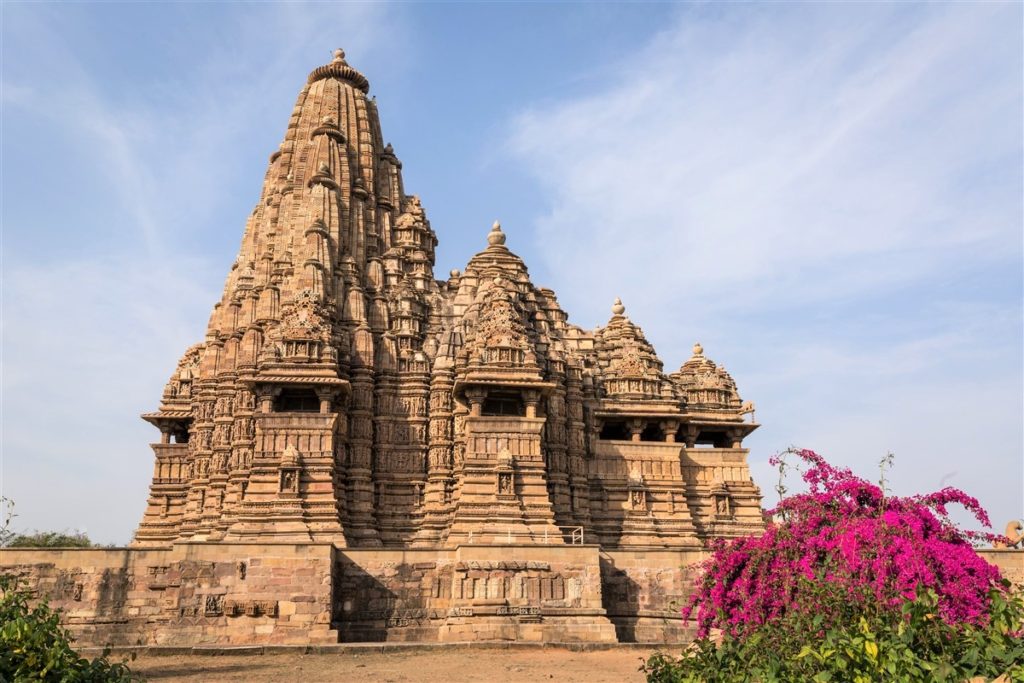
The Khajuraho Group of Monuments is a group of Hindu temples and Jain temples, and is a UNESCO World Heritage Site (included in the year 1986). The temples are famous for their nagara-style architectural symbolism and their erotic sculptures.
Most Khajuraho temples were built between 950 AD and 1050 AD by the Chandela dynasty. Historical records note that the Khajuraho temple site had 85 temples by the 12th century, spread over 20 square kilometers. Of these, only about 25 temples have survived, spread over six square kilometers. Of the surviving temples, the Kandariya Mahadeva Temple is decorated with a profusion of sculptures with intricate details, symbolism and expressiveness of ancient Indian art.
Temple Design
Kandariya Mahadev Temple occupies an area of about 6,500 square feet and rises 117 feet above ground level. Like all the temples (except Chaturbhuja temple), Kandariya Mahadev also faces east (direction of sunrise), and is built upon a raised platform (known as an adhishsthana) approached by a steep flight of steps. The architectural plan provides for a series of interconnected chambers, approached by visitors in the following sequence:
A rectangular entrance hall (ardhamandapa) leads from the steps into a central pillared hall (mandapa). This leads to the darkened sanctuary (garbhagrha) above which is the main tower and spire. Inside the sanctuary is a marble devotional image (linga) representing Shiva. The sanctum and mandapa are encircled by an ambulatory (walking area).
Throughout the building the architecture and the accompanying decorative art is deliberately symbolic, and follows a standard pattern of Hindu iconography. Thus the ornate carvings on the pillars, walls and ceilings of the interior as well as the exterior of the temple include depictions of kama, artha, dharma and moksa – the four necessary pursuits of life.
The exterior structure of Kandariya Mahadev is based on a main tower (shikhara), the temple’s highest point, which symbolizes Mount Kailash, Shiva’s Himalayan mountain home.
This main tower is surrounded by 84 smaller spires (urushringas), cascading down almost like a tiered waterfall. These spires are stunningly beautiful.
The whole building is made of sandstone, with a granite foundation. No mortar or cement was used in the temple’s construction: the stones were connected with mortise and tenon joints, held in place by gravity. The columns and architraves are composed of megaliths (large, often undressed stone) weighing up to 20 tons.
Kandariya Mahadev is decorated with a huge amount of stone sculpture. The entrance porch, for instance, is flanked by carvings of crocodiles and supported by a multitude of smaller figures, each with minutely carved details. On the exterior of the towers are intricately carved human and divine figures. The quality of the carving is especially high due to the superior quality of the sandstone used. As a result sculptors were able to represent fine details including strands of hair, manicured nails and intricate jewellery. The temple’s outside surfaces contain one of the most extensive arrays of erotic sculpture in the world (although they contribute less than 10% of the total sculptures temple has).
Chandela Dynasty
The Chandelas of Jejakabhukti were a royal dynasty in Central India. They ruled much of the Bundelkhand region (then called Jejakabhukti) between the 9th and the 13th centuries.
The Chandelas initially ruled as feudatories of the Gurjara-Pratiharas of Kanyakubja (Kannauj). The 10th century Chandela ruler Yashovarman became practically independent, although he continued to acknowledge the Pratihara suzerainty. By the time of his successor Dhanga, the Chandelas had become a sovereign power. Their power rose and declined as they fought battles with the neighbouring dynasties, especially the Paramaras of Malwa and the Kalachuris of Tripuri. From the 11th century onwards, the Chandelas faced raids by the northern Muslim dynasties, including the Ghaznavids and the Ghurids. The Chandela power effectively ended around the beginning of the 13th century, following Chahamana and Ghurid invasions.
The Chandelas are well known for their art and architecture, most notably for the temples at their original capital Khajuraho. They also commissioned a number of temples, water bodies, palaces and forts at other places, including their strongholds of Ajaigarh, Kalinjar and their later capital Mahoba.
Khajuraho Group of Monuments
The Khajuraho group of monuments was built during the rule of the Chandela dynasty. The building activity started almost immediately after the rise of their power, throughout their kingdom to be later known as Bundelkhand.
Most temples were built during the reigns of the Hindu kings Yashovarman and Dhanga.
Yashovarman’s legacy is best exhibited by the Lakshmana Temple.
Vishvanatha temple best highlights King Dhanga’s reign.
The largest and currently most famous surviving temple is Kandariya Mahadeva built in the reign of King Vidyadhara.
The temple inscriptions suggest many of the currently surviving temples were complete between 970 and 1030 AD, with further temples completed during the following decades.
The Khajuraho temples were built about 35 miles from the medieval city of Mahoba, the capital of the Chandela dynasty, in the Kalinjar region. In ancient and medieval literature, their kingdom has been referred to as Jijhoti, Jajahuti and Jejakabhukti.
Khajuraho was mentioned by Abu Rihan-al-Biruni, the Persian historian who accompanied Mahmud of Ghazni in his raid of Kalinjar in 1022 CE; he mentions Khajuraho as the capital of Jajahuti. The raid was unsuccessful, and a peace accord was reached when the Hindu king agreed to pay a ransom to Mahmud of Ghazni to end the attack and leave.
Khajuraho temples were in active use through the end of the 12th century. This changed in the 13th century; after the army of Delhi Sultanate, under the command of the Muslim Sultan Qutb-ud-din Aibak, attacked and seized the Chandela kingdom.
Central Indian region, where Khajuraho temples are, was controlled by various Muslim dynasties from the 13th century through the 18th century. In this period, some temples were desecrated, followed by a long period when they were left in neglect. In 1495 AD, for example, Sikandar Lodi‘s campaign of temple destruction included Khajuraho. The remoteness and isolation of Khajuraho protected the Hindu and Jain temples from continued destruction by Muslim rulers. Over the centuries, vegetation and forests overgrew the temples.
In the 1830s, local Hindus guided a British surveyor, T.S. Burt, to the temples and they were thus rediscovered by the global audience. Alexander Cunningham later reported, few years after the rediscovery, that the temples were secretly in use by yogis and thousands of Hindus would arrive for pilgrimage during Shivaratri celebrated annually in February or March.
Location
The Khajuraho monuments are located in the Indian state of Madhya Pradesh, in Chatarpur district, about 620 kilometres from New Delhi. The temples are located near a small town known as Khajuraho.
Khajuraho is served by Civil Aerodrome Khajuraho (IATA Code: HJR), with services to Delhi, Agra, Varanasi and Mumbai. The town is also linked by the Indian Railways service, with the railway station located approximately six kilometres from the entrance to the monuments.
Good to Know
- The temple is open from 6am to 10pm.
- Prasad is available here from 12pm to 2pm on all days of the week.
- Foreigners are charged a nominal amount to enter the temple.
- Devotees are allowed to offer sweets and dry fruits to the deity.
- Khajuraho Dance Festival is celebrated here annually in the last week of February till March.
- Mahashivratri is also one of the major festivals here.
Text is available under the license: Creative Commons Attribution-NonCommercial-ShareAlike; additional terms may apply. This license lets others remix, tweak, and build upon this content non-commercially, as long as they credit the author and license their new creations under the identical terms.
If you think any of the content here is not as per the copyright laws, please let us know via email or contact form on home page, content will be removed from page.
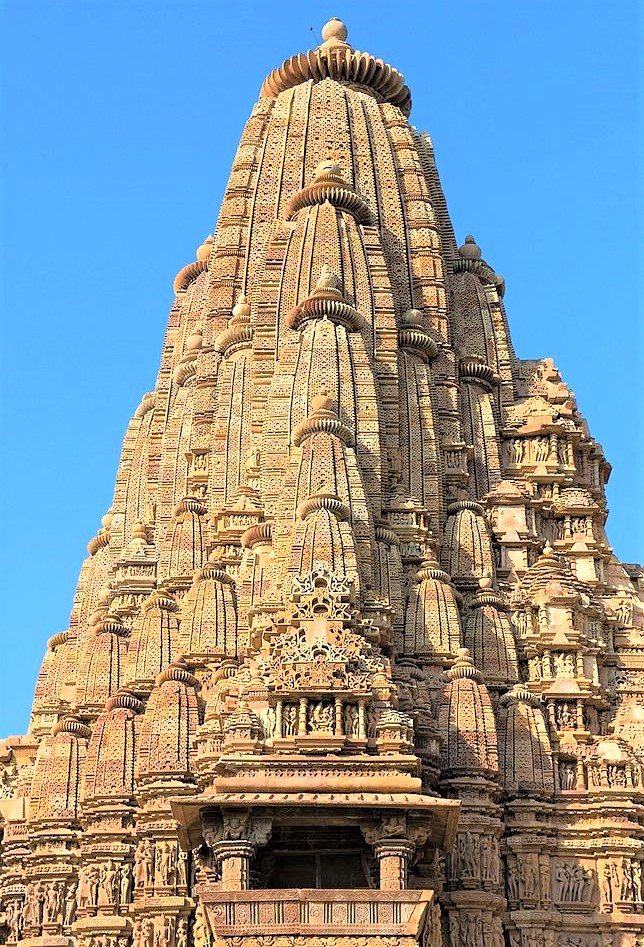
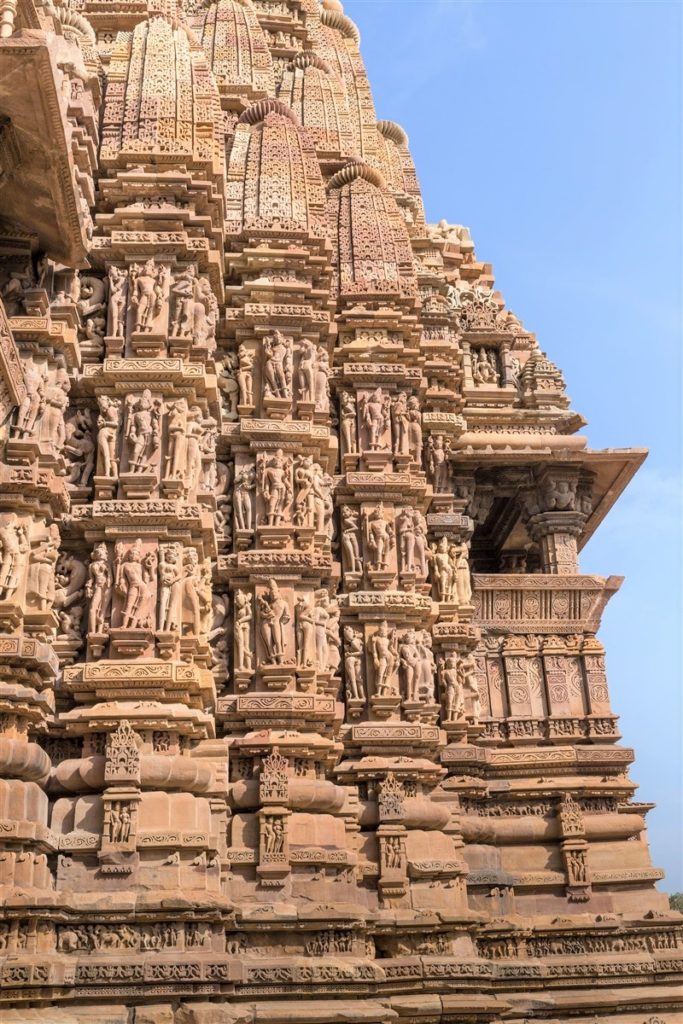
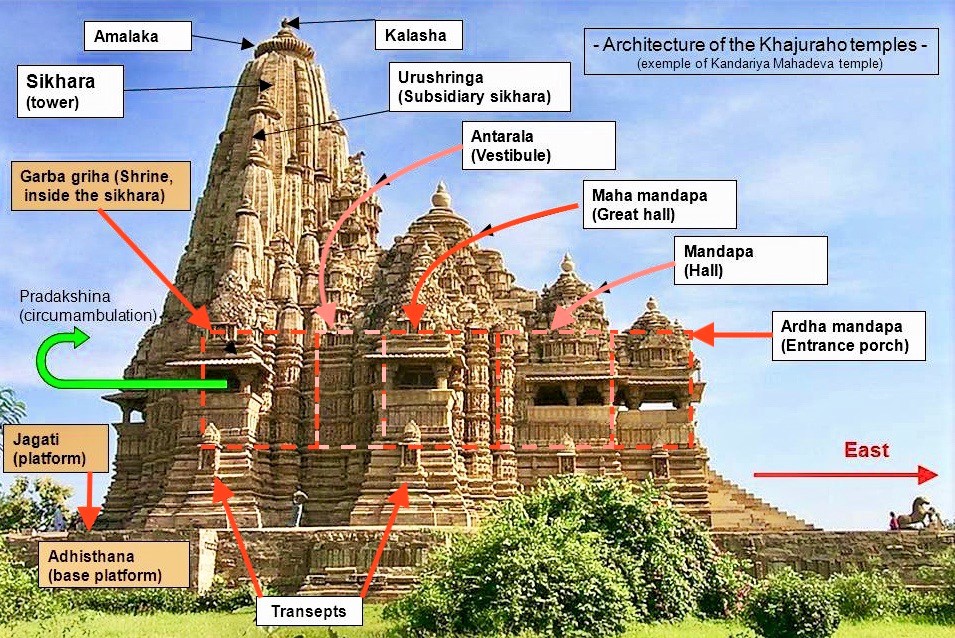
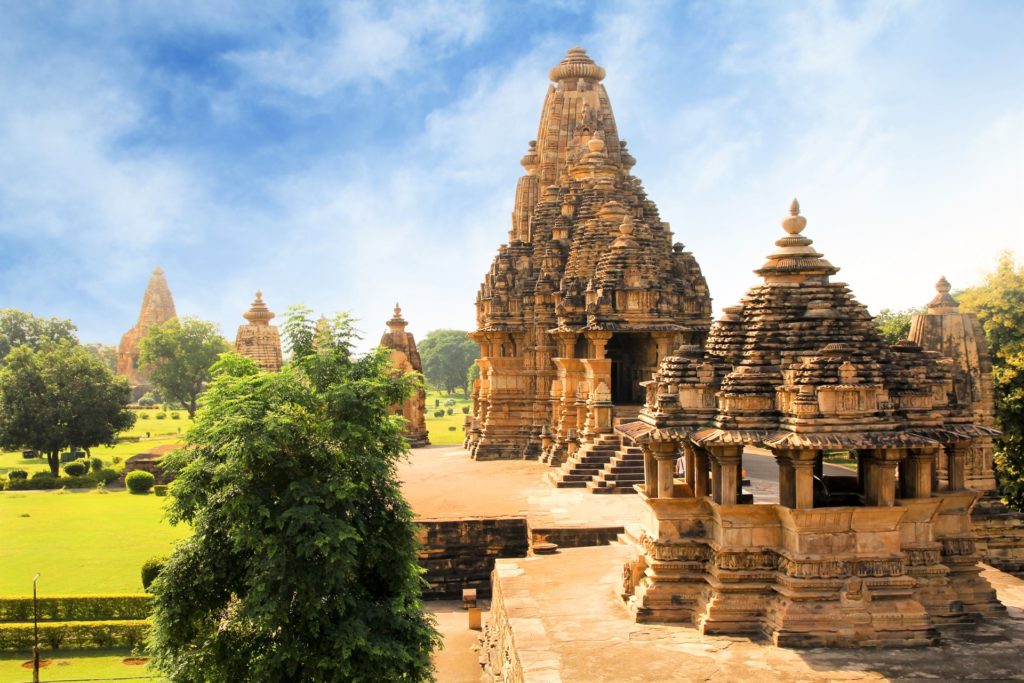
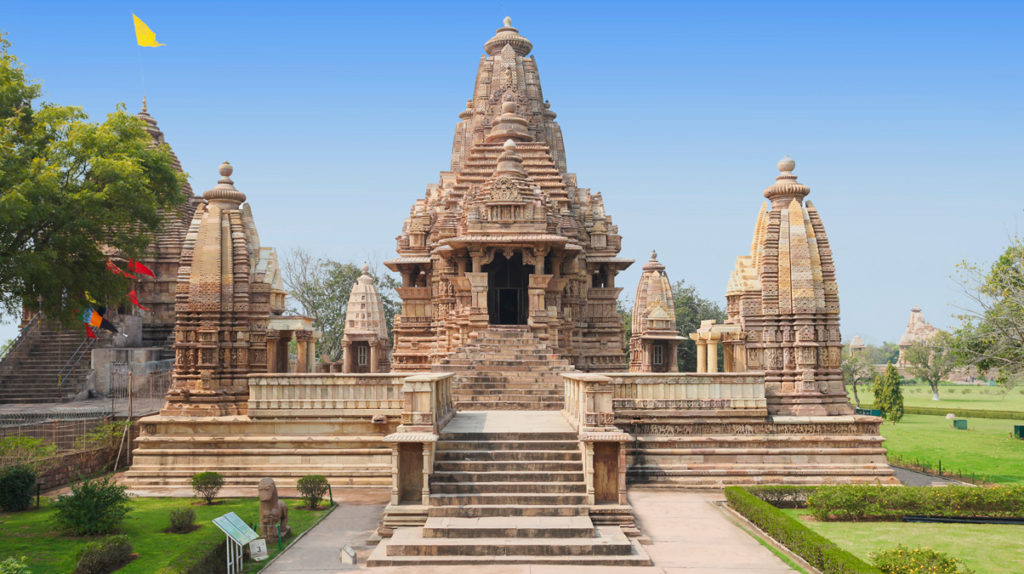
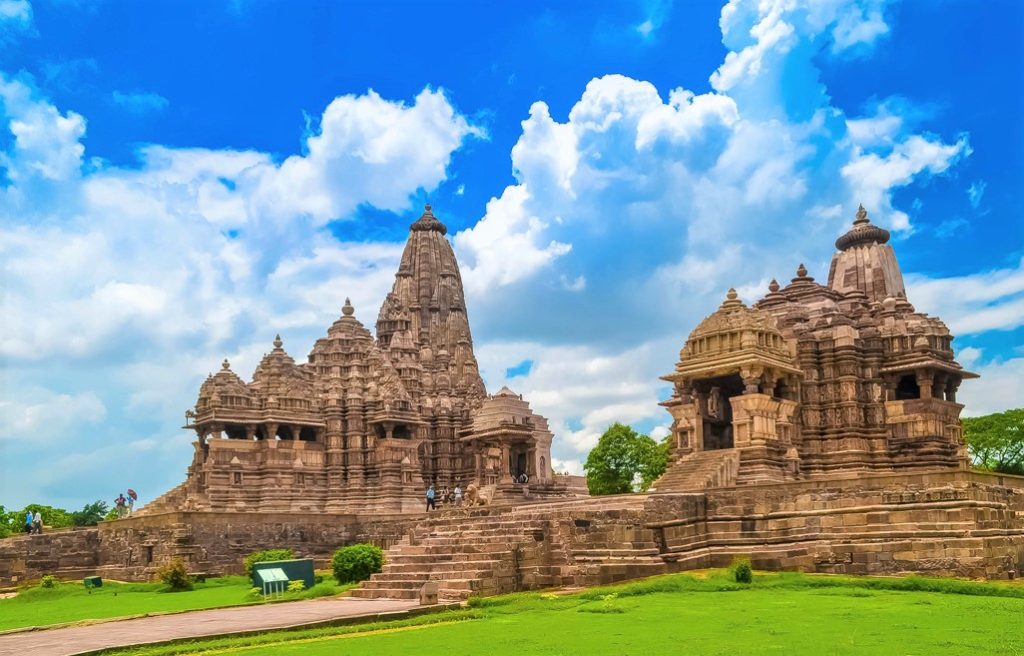
0 Comments